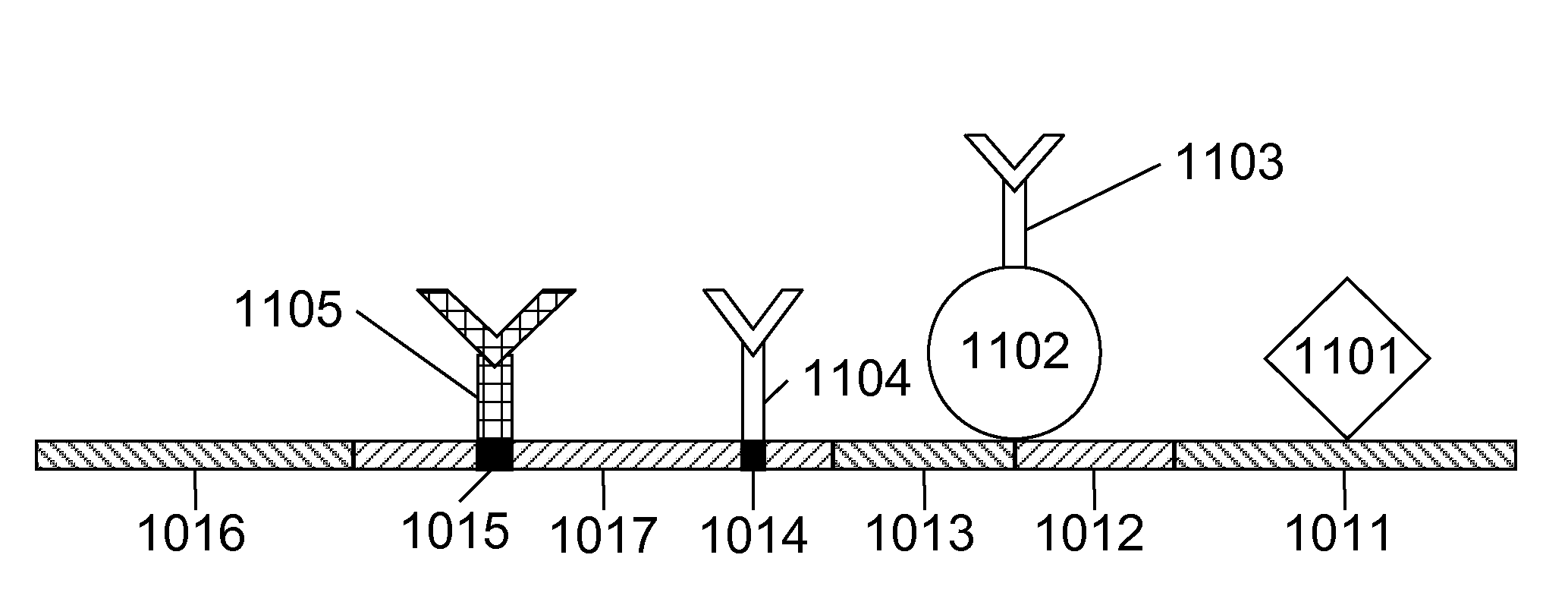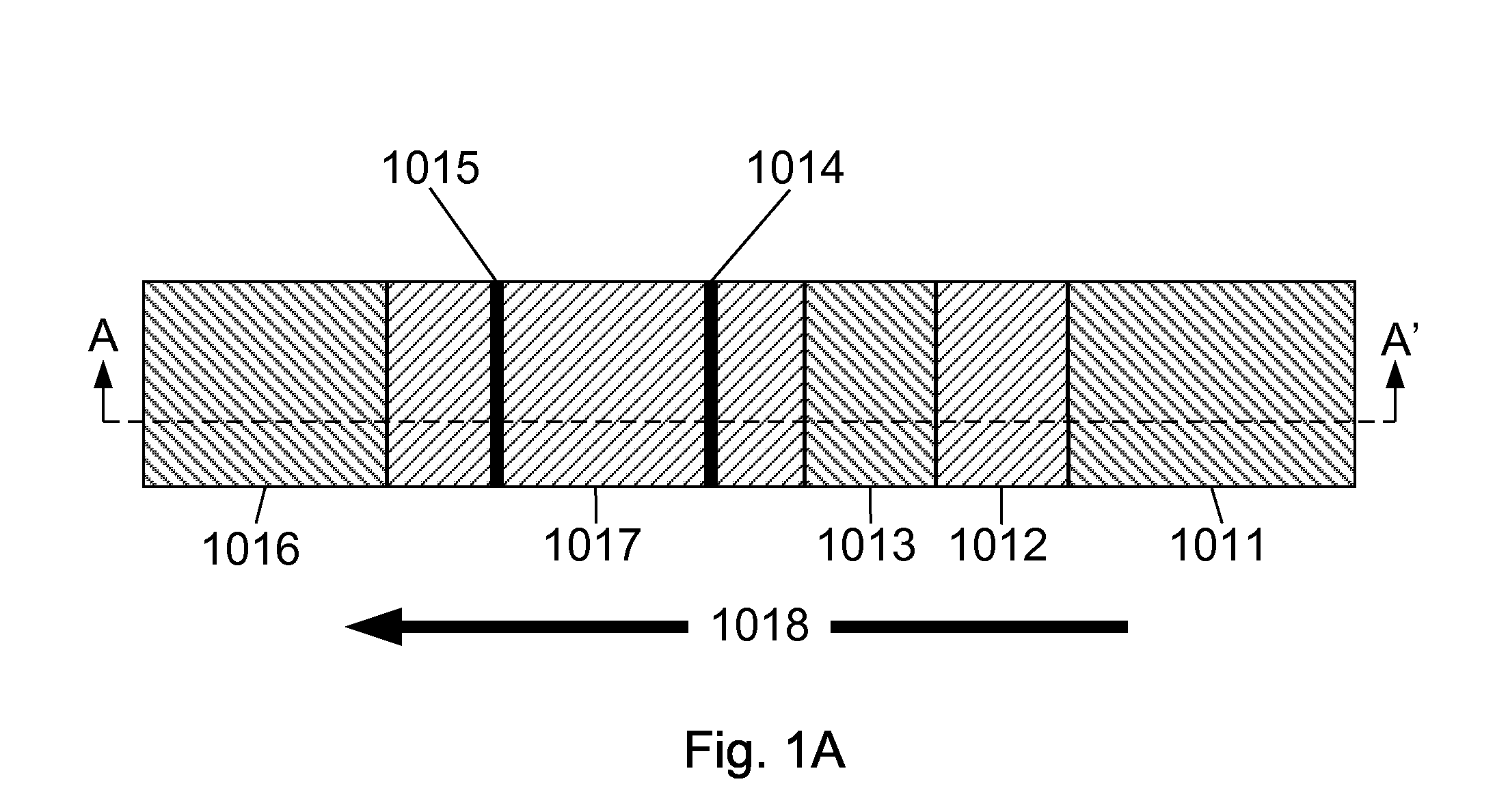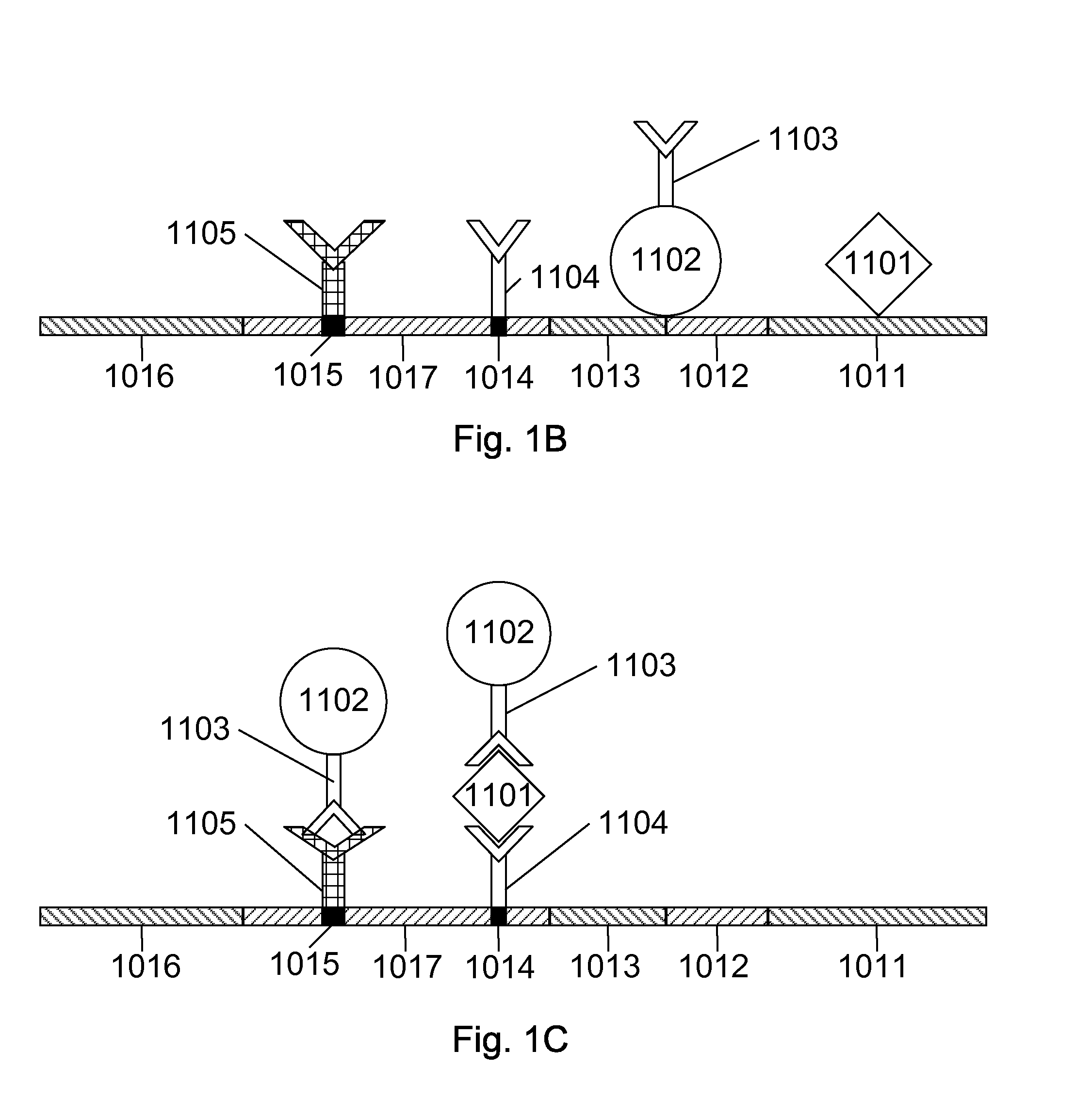Devices and Methods for Detection of Occult Blood
a technology of occult blood and detection methods, applied in the direction of measurement devices, instruments, suspensions and porous materials, etc., can solve the problems of poor sensitivity of chemical based guaiac methods, many limitations of methods for detecting occult blood, and failure to identify many patients with colorectal cancer or adenoma, etc., to achieve rapid and accurate detection and simple methods
- Summary
- Abstract
- Description
- Claims
- Application Information
AI Technical Summary
Benefits of technology
Problems solved by technology
Method used
Image
Examples
Embodiment Construction
[0021]During bleeding, broken red blood cells release components of occult blood including hemoglobin, hemoglobin-haptoglobin-complex, transferrin and albumin. Hemoglobin can be destroyed by acid and other environmental factors in the digestive system while the other components of occult blood such as hemoglobin-haptoglobin-complex, transferrin and albumin are not as easily destroyed as they have a different interaction with the environment factors in the digestive tract. Testing only for the presence of hemoglobin as an indicator of the presence of occult blood can produce false negatives, especially for samples or specimens from patients with relatively upper digestive tract bleeding. Testing for the presence of hemoglobin-haptoglobin-complex, transferrin or albumin as part of the occult blood test can avoid or reduce the false negatives rate resulting from relatively upper digestive tract bleeding. Therefore, the presently preferred embodiments of this invention, the One Step OB ...
PUM
| Property | Measurement | Unit |
|---|---|---|
| concentration | aaaaa | aaaaa |
| concentration | aaaaa | aaaaa |
| temperature | aaaaa | aaaaa |
Abstract
Description
Claims
Application Information
 Login to View More
Login to View More - R&D
- Intellectual Property
- Life Sciences
- Materials
- Tech Scout
- Unparalleled Data Quality
- Higher Quality Content
- 60% Fewer Hallucinations
Browse by: Latest US Patents, China's latest patents, Technical Efficacy Thesaurus, Application Domain, Technology Topic, Popular Technical Reports.
© 2025 PatSnap. All rights reserved.Legal|Privacy policy|Modern Slavery Act Transparency Statement|Sitemap|About US| Contact US: help@patsnap.com



